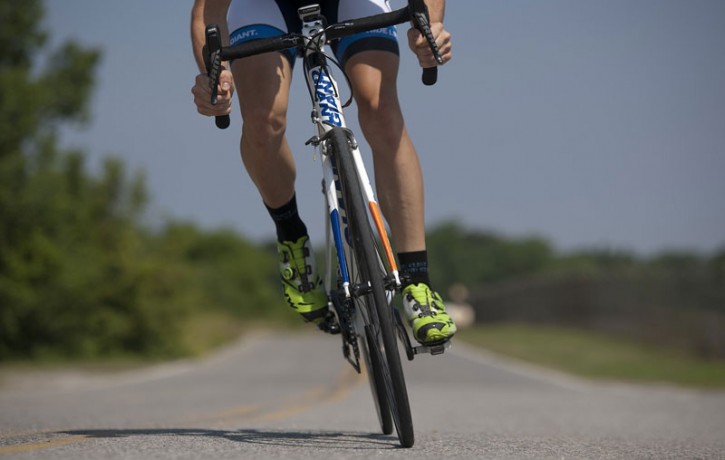Common Cycling Problems

Bicycle related injuries have become more and more common in the clinic as the activity rises in popularity amongst the public, quite a lot of the time due to improper fit of the bicycle to the rider. Too low a seat, too high the handlebars, placement of brakes can even lead to wrist problems. Cyclists who race at high speeds put themselves at risk to muscle strains more so than anything else aside from the possible collision or fall. Those who ride for distance are more susceptible to overuse injuries, malnutrition or once again collision, which could be due to equipment failure being on the bicycle for an extended period of time.
Something to remember is the parts of the body which have contact to the bicycle (pedals, seat, and handlebars) are the areas generally associated with cycling injuries, that’s why it’s so important to ensure you have your bike set up correctly.
Accidents
One of the risks of riding as a hobby is of course the fact that you will have to share roads with other, slightly larger vehicles. Contusions, sprains, fractures just to name a few are all possibilities when out on the road. Cleats on pedals can be a main factor in some injuries being that if you were to have a collision or a fall, the bike follows. Also, handlebars and seat can be a major implement in more severe situations, causing abdominal and pelvic injuries. The prevention for such types of injuries have developed over the years with safety equipment, and keeping your bike in good condition. Overall the best thing you can have is experience on the bike. The more time you spend cycling, the more you can learn to anticipate hazards on the road ahead. In this way, it’s not too different from driving a car, though slightly more at risk without the outer shell over you!
Overuse injuries
Injuries that happen over time on the bike have a wide spectrum, ranging from ankle to wrist. It’s difficult to target one or two in particular, so what I’ll do is mention the most common for each part of the body.
Within the arm, carpal tunnel syndrome seems to pop up a lot in research. The carpal bones are the small pebble-like bones in the wrist, allowing the range of movement you have. Within the carpals is a small tunnel where the majority of blood vessels, nerves etc flow through to the hand. When this area becomes inflamed it’s known as Carpal Tunnel syndrome. As a cyclist you apply a lot of pressure through your wrists no matter how the position. Theoretically if you ride a road bike or mountain bike, you are likely to put a lot of your upper body weight through your wrists for a long period of time, so it’s understandable why this is one of the common issues in the upper limb.
Other common injuries in the upper limb include:
- Tennis elbow
- Golfers elbow
- Tricep tendinopathy
- Ulnar neuropathy
In the lower limb, patellofemoral pain is quite a common issue reported to be found in up to 65% of long-distance cyclists and 42% in recreational cyclists. This is unsurprising, considering the amount of compressive force that is generated through the knee to flex and extend. The patella sits directly over the top of the knee joint, and is attached to the body through the quadriceps. This means that when you use your quads, you are pulling your patella onto the knee joint. In doing so repetitively during cycling can cause an overuse injury.
The rule of the road for many cyclists has come to be “if the knees hurt, gear down.” The cyclist is likely to be in too high a gear for their ability on the particular terrain. A high gear means there is a longer period of compression on the knee joint and therefore more pain.
Other lower limb overuse injuries include:
- Iliopsoas tendinitis
- Metatarsalgia
- Achilles tendinitis
- Plantar fasciitis
- Trochanteric Bursitis
One other area of common injury to note is the back and neck, taking up to 60% of cyclists as a victim. Being in a constant position of leaning forward with the head up, it is logical to expect some form of pain in the back and neck especially when just starting as a cyclist.
Acute injuries
Aside from the obvious accidents as explained above, acute injuries are a less common side of injury in cycling as they require some form of impact or short bursts of intensity. Sprint cyclists will have a higher percentage of acute injuries as a separate population however.
Running has runners knee for the constant repetitive bounding, weight lifting has pectoral strains for the high level of weight being bench pressed. In cycling, the two most common strains would be found in the quadriceps and calves. Calves more so in road cyclists due to the cleats only allowing the ball of the foot in the pedal, forcing the calves to come into play.
From a therapeutic point of view ride safe, stretch, keep hydrated and fuelled and keep a regular routine of rest in between big cycle days. If you feel something isn’t right, book in a consultation and we can keep it from getting to anything as serious as the common injuries above.
Following this advice won’t make you immune but it’ll help! For more sports injury advice, please visit The Body Matters or call us on 01702 714 968.
This article was written by Kieran Mote BSc. Sports Therapist.
- How Amnanda Can Help with Headaches - 27th November 2025
- Rest and Realign: Coming Home to the Body - 27th October 2025
- Consult Your Body’s Inner Wisdom - 25th September 2025
